The alphorn maker near Eggiwil in Emmental is a Swiss alphorn making dynasty. Ernst Schüpbach had built his first alphorn here in 1925 and later introduced his son-in-law Hansruedi Bachmann to the craft. Walter Bachmann has been managing the family business in the third generation since 2008. This includes a farm with twelve happy cows, which today still contributes about a third of the income. When Walter speaks lovingly about his “Grossäti” (grandfather), he thus tells first-hand alphorn making history. The “Alphonmacherei” (alphorn maker workshop) making has witnessed how one-piece alphorns made from diagonally grown fir trees evolved into multi-part instruments made from different types of wood. It has seen preferences swing back and forth between thick and thin wall thicknesses over the decades, with local differences in construction slowly disappearing. And the family has gained experience in how to make the wood sound.
Walter returned to Emmental after his youthful years of wandering. He also rediscovered the alphorn after detours via brass instruments. In the meantime he has become an excellent alphorn player, who not only plays in the first category at yodel festivals, but also dares to improvise freely. Walter describes his approach to alphorn making as “tinkering” – more art than science. Every wood has different acoustic properties; therefore, it is useless to reproduce a theoretically optimal alphorn scale with a CNC machine to the nearest 1/1000th of a millimeter. Instead, Walter listens closely to the sound of the wood – when selecting it, when working on it, when trying it for the first time – and uses his experience to tailor the instrument to that sound. Specifically, this is reflected in the cup, whose wall thickness can vary between 6-10mm. Thus, each Bachmann alphorn also has an individual sound.
Due to the absence of CNC machines and copy milling, the amount of work required for an alphorn is around 80-85 hours. In the workshop, Walter receives support from neighboring wood artist Roland Schenk. Father Hansruedi continues to work in the business, but has reduced his workload in recent years. Thus, the alphorn maker still creates about 25 instruments per year.
The classic Bachmann alphorns are three-piece and are made of hazel spruce or Swiss stone pine. Walter obtains wood from various forest owners in the area, and some of the Swiss stone pine also comes from the Grisons. He has moved away from moonwood; he has observed that moonwood stores very stably, but the sound lacks resonance. Visually, the two wooden rings on the cup, which uncle Fritz Christen-Schüpbach turns and carves, stand out on the alphorns. The foot is signed “Bachmann’s Alphornmacherei”. When I visited, two of the nine finished instruments were decorated with (more than averagely beautiful) peasant paintings. Since 2014, Walter has also been building a multi-part “89” Edelweissalphorn. As a distinguishing feature, an Edelweiss made of mother-of-pearl is emblazoned on the front ring. The development of this instrument was initiated by a mountainbiker. It was to be a very challenging project: Walter says that the additional jacks cost him a lot of headaches and numerous attempts until the sound and intonation were right again. The model now accounts for around half of production.
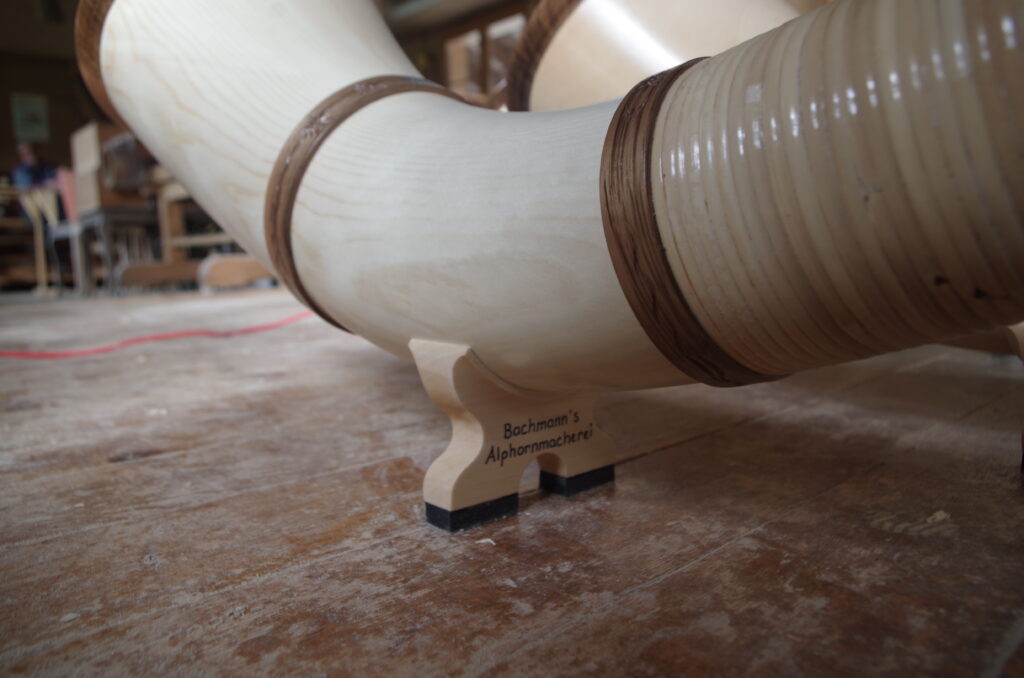
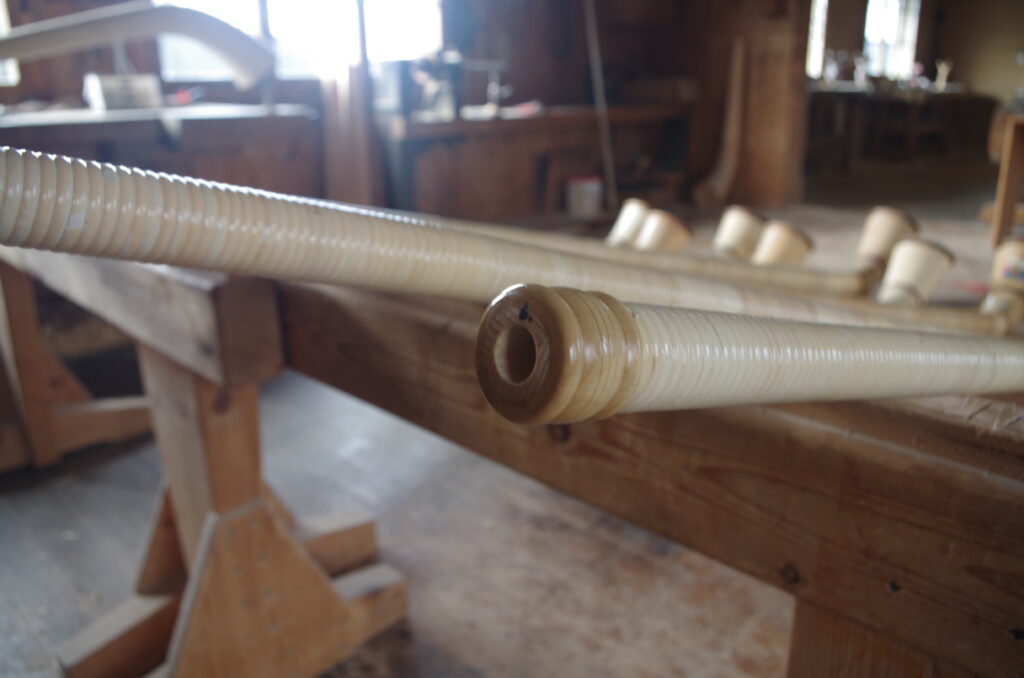
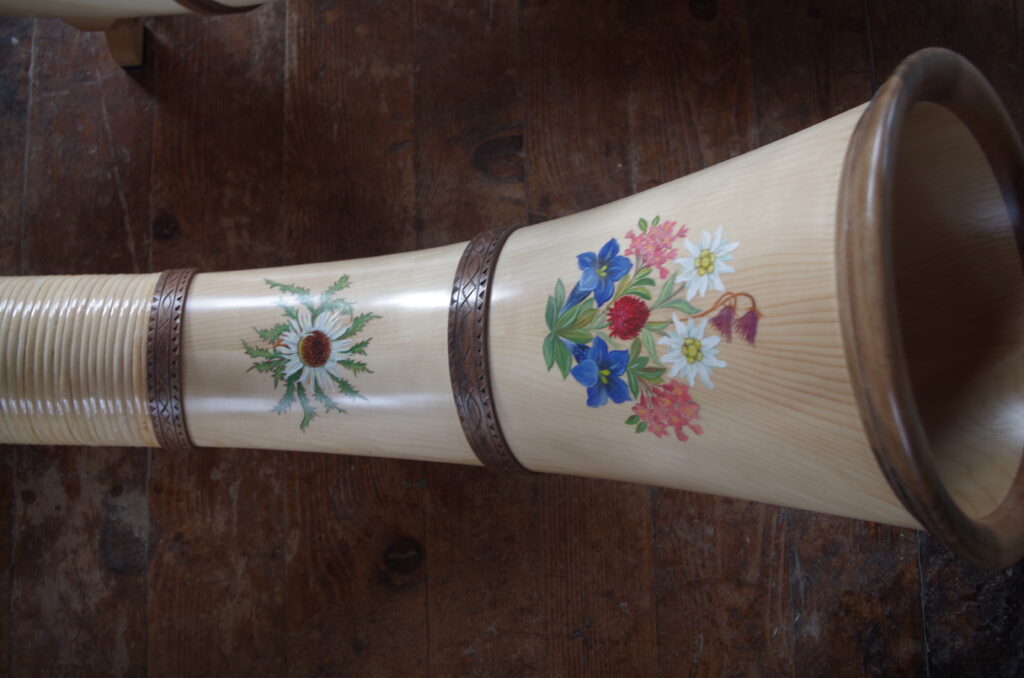
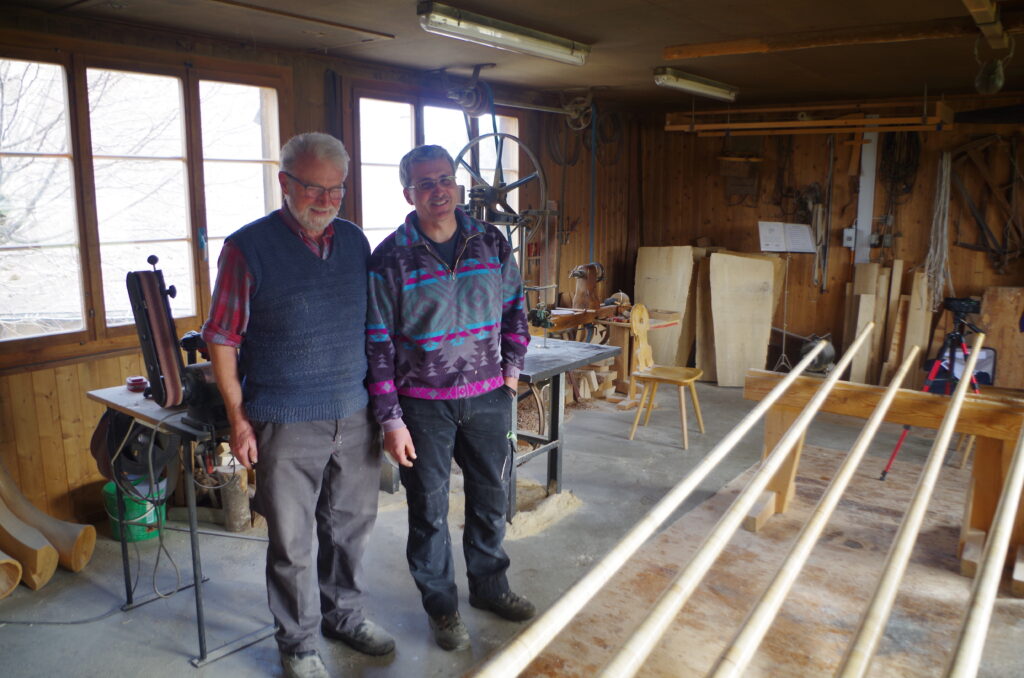
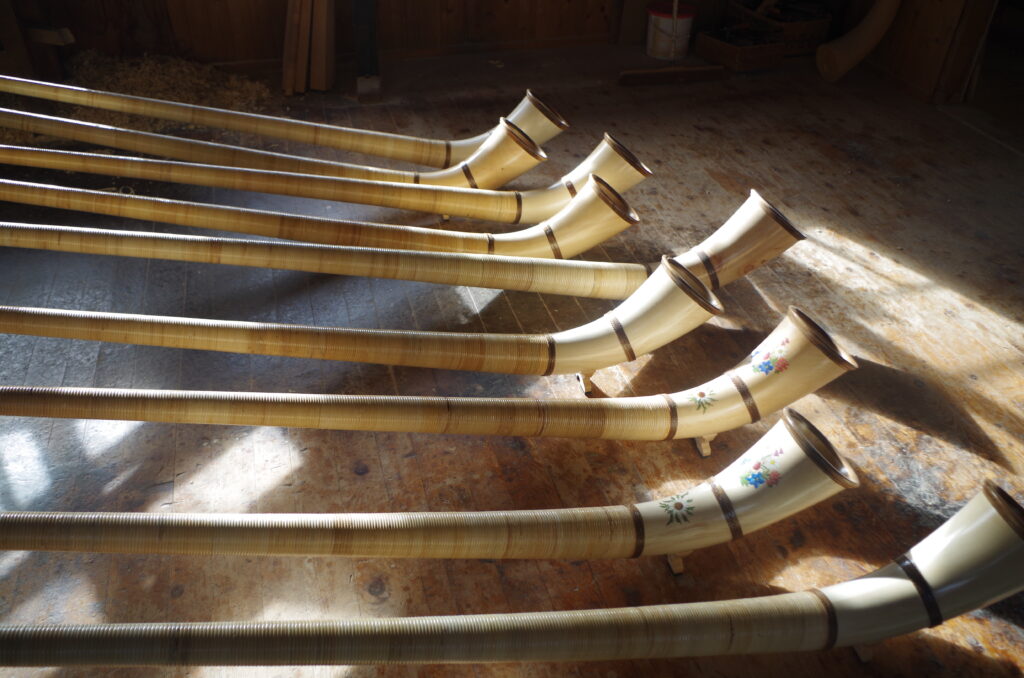
By chance, I got to try out a friend’s three-piece Bachmann alphorn the day before my visit. In the alphorn workshop there were again nine freshly finished alphorns. I blew into a multi-piece model, a three-piece in spruce and a three-piece in pine. All of them had a very full sound with strong dynamics. In the crescendo, I had the feeling that at a certain level the turbo kicks in and a wide carrying sound carpet spreads out. Nevertheless, the horns can also be played very sweetly in the high register. The notes sit relatively firmly, cannot be bent at will, and the transitions and jumps proceed in a very civilized manner. Due to the mass, the horns need a little more force than thin-walled models. I could not find any noteworthy problems with the intonation. As expected, the stone pine sounded somewhat warmer. Unlike in the past, Walter now uses pine wood with a finer grain; that’s why the difference is no longer so pronounced. The multi-part model could keep up well with the three-part one in terms of sound.
Of particular interest to me was also the “real” E-flat horn – not an F-sharp horn with extension – that Walter built for the group “Estragon” from Thun. Blowing on these instruments also exercises the biceps: Walter builds the pipes from wood with a high specific gravity and needs lighter wood for the cup. The sound of this XL instrument was bombastic. The longer air column needs some additional pressure, but you can play at altitude beyond the E5.
The price for a three-piece Bachmann alphorn in F# is 3’080 CHF, in F 3’200 CHF. Walter will reveal the price for the multi-piece Edelweiss alphorn on request. Regarding delivery times, Walter has noticed that in the age of Amazon, many customers are not willing to wait more than a year for their order. He has therefore optimized the internal processes and can now produce somewhat more quickly. Currently, you have to wait about six months for his horns. He also caters to individual wishes – for example, he made a thinner-walled horn for Hans Stettler. The alphorn making workshop can be visited also with small and large groups. On the website of Bachmann’s Alphornmacherei you will find more photos, movies and information. Below are a few impressions from my visit on 2/17/2023.
Conclusion: With a century of experience, alphorns are handmade here, which bring the individual characteristics of the wood to sound. Very traditional instruments with a full sound.
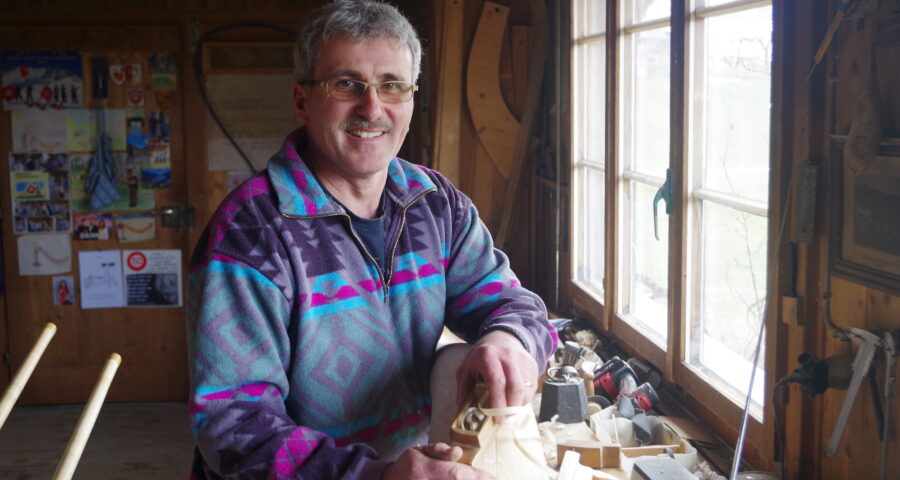
Leave a Reply